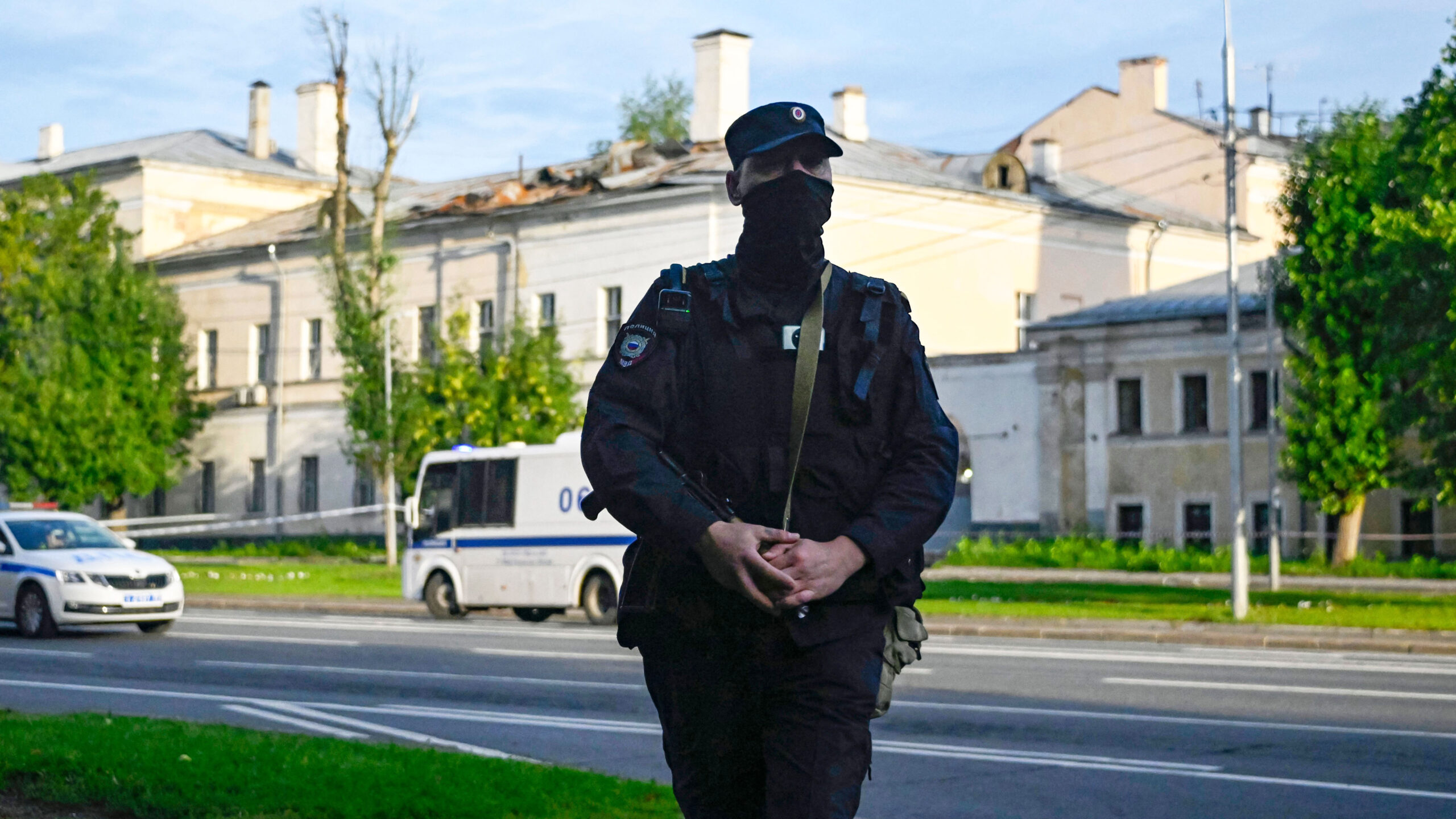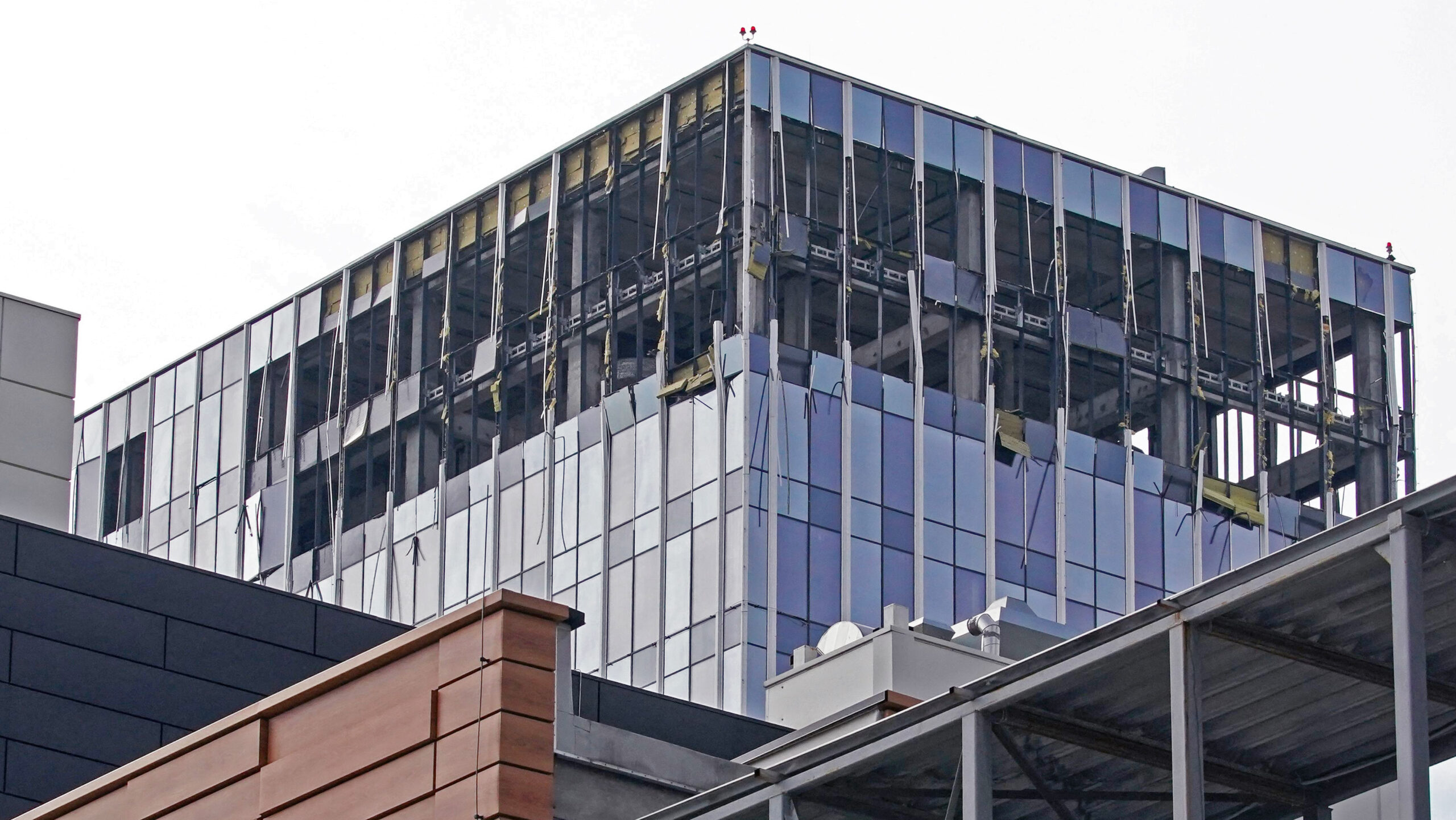Russia has responded with predictable outrage after the latest Ukrainian drone strike on Moscow, with Kyiv promising more such attacks to come. As well as the Russian capital, Russian-occupied Crimea was the target of multiple drone strikes overnight. While Ukraine has prosecuted targets in Crimea and inside Russia before using drones, the latest wave of attacks is unusual in that President Volodymyr Zelensky had promised what he called “a retaliation to Russian terrorists for Odesa,” after the Kremlin’s forces struck the Ukrainian port city repeatedly in recent days.

Two Ukrainian drones struck central Moscow at around 4:00 am local time, causing damage to two non-residential buildings. One of those buildings was around 1.2 miles from the headquarters of the Russian Ministry of Defense, on Komsomolsky Avenue, although it’s unclear if that was the intended target. Hitting that building would have been a significant propaganda coup — after all, this is the heart of the Russian military and where Russian defense officials hold their regular briefings on the progress of the war in Ukraine. Other military-related buildings are also located nearby, including some affiliated with Russia’s GRU military intelligence service.
The other building to be damaged was an office block, where the windows on the top two floors were left shattered and debris strewn across the ground below.
According to Russian reports, nobody was hurt in the attacks, while Russian Foreign Ministry spokeswoman Maria Zakharova accused Kyiv of “an act of international terrorism.”
As well as the damage to buildings, some roads in Moscow were temporarily closed.
“I was asleep and was woken up by a blast, everything started shaking,” one woman who lives near the high-rise building told Reuters.
According to the Kremlin’s account, both the drones involved in the Moscow strike were “neutralized” using “radio-electronic equipment,” which caused them to crash, but no further details were provided of the types of systems used.
That statement suggests it’s unlikely that the Pantsir-S1 air defense system placed on the roof of the Ministry of Defense headquarters, one of a number of these units that have been deployed around Moscow, was involved in bringing down either of the drones, and it’s unclear if the system was even activated on this occasion.
Despite the limited damage, and the fact that the defense ministry’s HQ escaped unscathed, the ability of Ukraine to strike at the heart of the Russian capital is highly significant. Back on May 3, Moscow experienced another high-profile attack, when a pair of drones got as far as the Kremlin, in a strike that came in the run-up to Russia’s Victory Day celebrations. Following that, there was an attempted mass drone raid on the Russian capital on May 30, which Russian reports claimed involved more than 25 Ukrainian drones. On that occasion, the Russian Ministry of Defense claimed that eight of those drones were shot down or otherwise diverted from their intended targets.
As well as Moscow, Ukrainian drones were also launched against targets in Crimea. At least 17 drones were sent against the Russian-occupied peninsula overnight, according to the Russian Ministry of Defense. The same source said that these drones were brought down using a combination of ground-based air defenses and undisclosed anti-drone equipment. It’s unclear how many others reached their targets or came down for other reasons, although at least one appears to have hit an ammunition warehouse in the vicinity of the Russian military airbase at Dzhankoi in the north of Crimea, another area that has come under previous bombardment.
However, the Russian-installed head of Crimea admitted that an ammunition warehouse was struck and a residential building damaged. There are rumors that the warehouse in question may have been used to store missiles for the K-300P Bastion-P coastal defense missile system that Russia has been using in a land-attack role, including apparent launches from Crimea.
According to the Kremlin-connected Rybar Telegram channel, the drone strikes against Crimea were accompanied by four Storm Shadow air-launched cruise missiles. Rybar further reported that all four missiles hit their targets, which comprised of an ammunition warehouse (hit by three missiles) near Vilne and a repair base near Novostepove (one missile). Recently supplied by the United Kingdom, these far-flying weapons have already been connected with previous other attacks on high-profile targets in Crimea.
Ukraine’s Deputy Prime Minister Mykhailo Fedorov took to the Telegram messaging app to issue the following statement:
“Today at night drones attacked the capital of ‘the orcs’ and Crimea. Electronic warfare and air defense are already less able to defend the skies of the occupiers.”
While this statement refrained from taking direct responsibility for the drone strikes, it’s unusual, in general, for Ukrainian officials to reference attacks on Russian and Russian-occupied territory in such a swift and direct manner.
Interestingly, Fedorov, added that “No matter what happens there will be more of this,” indicating plans for more drone strikes to come.
Fedorov is notable furthermore for his work to expand Ukraine’s ‘drone army,’ as part of his role as heading up the Ministry of Digital Transformation. Earlier this summer, we reported on how this body was hosting what it calls “The Drone Army FPV Super Bowl” to help spur the domestic development of these weapons. In this context, FPV refers to first-person video drones, which have become a familiar feature on the Ukrainian battlefield. Although clearly, Kyiv’s ambitions for its strike drones go well beyond hitting tanks, trucks, and troops in trenches, extending all the way up to key military and government infrastructure, including far behind Russian lines.
As to the drones used in the latest attack on central Moscow, there has been speculation that they may have been of a locally developed type named Bober (meaning Beaver), based on their unusual canard configuration with the main wing set well back on the airframe. A similar-looking drone was also involved in an earlier attack on Moscow, at the end of May this year.
Little official information is available about the Bober, but unconfirmed reports suggest a wingspan of a little over 8 feet, a length also of around 8 feet, and a speed in the region of 90-120 miles per hour. The estimated weight is no more than 300 pounds, including a warhead of 22-44 pounds.
Once again, drone strikes launched against Russian territory are now an established feature of the conflict, and they have increasingly got closer to targets in and around Moscow. Meanwhile, Russian-occupied Crimea remains a prime target for Ukrainian attacks not only by drones but also by other kinds of weapons, including Storm Shadow cruise missiles, as well as saboteurs.
What’s interesting about today’s Ukrainian drone strikes is that they appear to have been claimed, albeit not directly, by authorities in Kyiv as payback for Russian strikes on Odesa.
The latest of those Russian strikes, carried out yesterday, saw missiles hit various targets in the port city. One person was killed and 14 were hospitalized, according to the regional governor, and one of the buildings that was damaged was the Transfiguration Cathedral, in the heart of Odesa’s UNESCO-listed historic center.

Meanwhile, Moscow branded the attacks on Odesa as payback of its own, this time for the Ukrainian attack last week on the Kerch Bridge, the latest in a series of strikes intended to sever this vital artery between Crimea and the Russian mainland.
Since the latest Ukrainian drone strikes, Dmitry Medvedev, the deputy chairman of Russia’s Security Council, has suggested that the Kremlin now hit back against different types of target sets, although he provided little in the way of detail. “We also need to select non-standard targets for our strikes, not just storage sites, energy hubs, and oil bases, the state-run TASS news agency reported Medvedev as saying. “There are other places where nobody would be expecting us and where strikes would have a widely felt impact,” he added.
All told it seems that these tat-for-tat strikes are becoming not only more common but also that Ukrainian officials are increasingly taking responsibility for attacks on Russian targets that were previously mainly conducted under a veil of secrecy.
Contact the author: thomas@thewarzone.com
